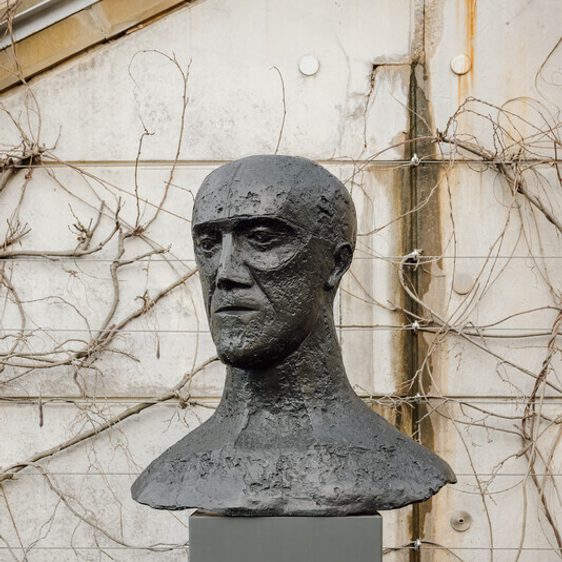
Elisabeth Frink: Riace II, III and IV
Art Outdoors /Elisabeth Frink: Riace II, III and IV
The Riace figures are inspired by the 5th century BCE bronze sculptures that were rediscovered in the sea off the coast of the Riace region of Italy in 1972. Frink said ‘the original figures are very beautiful, but also very sinister, and that is what they are supposed to be’.
Frink had often used masks and goggles to conceal eyes and hide true expressions. She began experimenting with painting the faces of her figures in the early 1980s as a way of introducing colour and drawing our attention to their ambiguous features. These masks, she said later, are ‘a way of showing that their beauty in a sense hides what they are up to’.
An exhibition of Frink’s sculpture, prints and plaster models – Natural Connection – is on display at The Weston until 23 February 2025.
Courtesy The Frink Estate and Yorkshire Sculpture Park.
You may also like
- Art Outdoors

Elisabeth Frink: Atlas
In Greek mythology, Atlas is a figure responsible for holding the heavens aloft. This sculpture combines several themes that Frink returned to throughout her career: strength and endurance alongside burden and vulnerability. - Art Outdoors

Elisabeth Frink: In Memorium II
Frink succeeds in capturing a sense of defiance with In Memoriam II as the features of the figure express great sadness but also a sense of dignity. - Art Outdoors

Elisabeth Frink: Seated Man II
Seated Man II relates strongly to Frink’s larger-than-life Riace figures. - Art Outdoors

David Nash: Barnsley Lump
Barnsley Lump is a rough-cut block of local coal that connects to the geological and social history of the area. It is gradually disintegrating back into the earth, as Nash anticipated, describing it as a ‘going’ work.